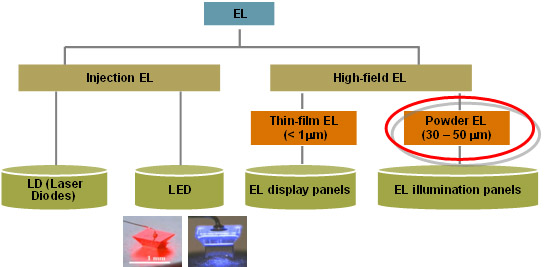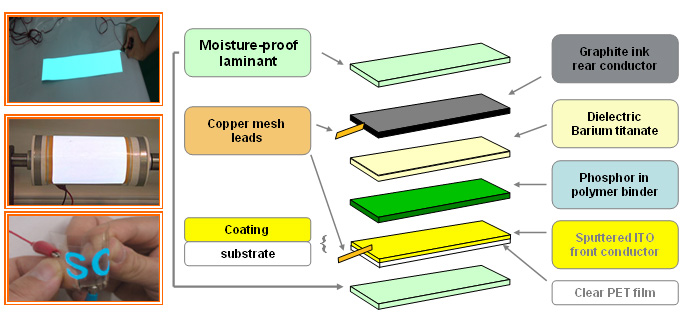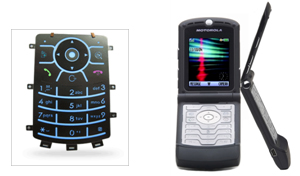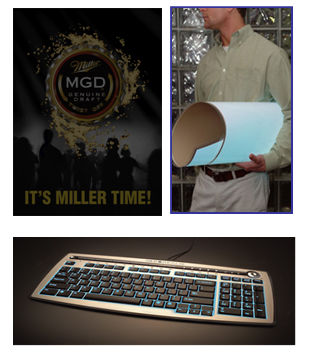EL Theory
Electroluminescence (EL) –in which a material emits light in response to an
electric current passed through it, or to a strong electric fields. The excited
electrons release their energy as photons - light. Due to the different energy
band, it emits different wavelength, the materials are divided into:
- Iii-V Semiconductors materials (LED)
- Organic materials (PLED; OLED)
- Powder materials (Phosphor)


1. Phosphor Handbook, p. 123. CRC Press 1999, edited by Shionoya S and Yen W M.
EL Lamp Process and Components:
- Emitter layer: ITK 5517+ Phosphors
- Dielectric layer: ITK 5517+BaTiO3
- Conductive layer: Silver Inks: EA510; EA512 Carbon Inks : C1399; C1799
- Insulating layer : UP316 (oven) ; UG 360 (UV)

EL Phosphor Applications:
- Cell phone keypads/electronics
- Automotive lighting
- Signage
- Back-light applications for LCD
- Potential for general illumination and display


Important Features of EL Lamp:
- Uniform illumination
- Thin; <1mm
- Flexible and Lightweight
- Negligible heat generation
- Impact and Vibration resistant
- Low power consumption;<0.2 mA/cm2
- Good waterproof
- AC Power driver
- Work Temp.: -35-60 oC
- Work Life : >8000h
- Inverter or fix voltage source



